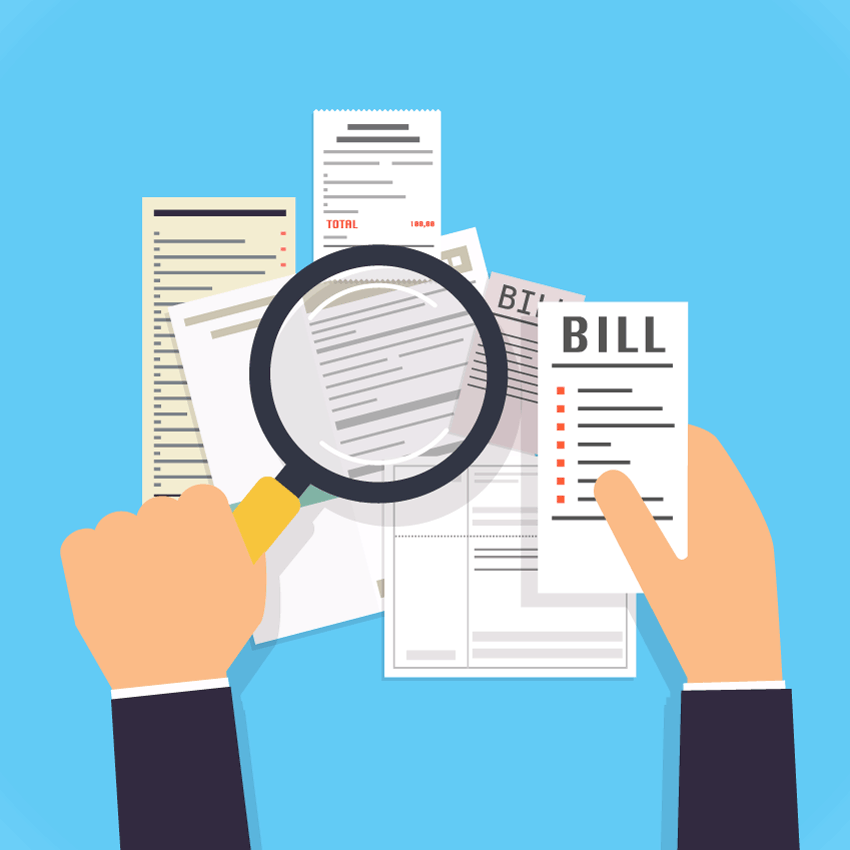How to Cut Your Utility Bills This Winter, No Matter Your Heating Fuel
Home > Debt Help Advice >
As the temperature outside drops, your utility bill is on the rise.
We get it. It’s cold outside and you want to keep warm and cozy inside, but before you dial up that thermostat, take the time to read some tips and tricks to save money this winter.
The winter of 2016 was the warmest on record in the United States, with temperatures averaging 37 degrees. However, experts expect a return to normal winter temperatures in 2017, which means an average temperature of around 33 degrees.
This means you can also expect a return to normal winter energy bills.
The U.S. Energy Information Administration predicts energy costs will rise an average of 24% this winter compared to 2015–16. It could cost you slightly more or less, depending upon the type of fuel you use.
» Learn more: How to Get Help Paying Your Utility Bills
Heating Fuel: Predictions for Winter 2017
Natural gas is used by 57% of American homes, who can expect to spend at least $116 (22%) more this winter due to a rise in natural gas prices.
Heating oil is used primarily in the Northeast region of the United States. Residents there should expect a steep increase to keep warm, paying $378 (37%) more than last year.
Electricity heats 39% of U.S. homes. These households probably won’t even notice the modest $49 (5%) rise in price due to the increased consumption that will accompany colder temperatures.
Propane is used to heat only 5% of homes. Propane prices were at a record low last year, so expect a major spike in costs this year. U.S. inventories were at an all-time high in 2015 and will be again this year. The difference is going to be the 14% increase in demand. The EIA projects a $290 (30%) increase this year for propane homes.
So by and large, you will pay more this winter to keep warm, but there is no need to panic. We have several suggestions to offset these increases, most of which won’t cost you a dime!
7 Ways to Cut Your Heating Costs
- Open your curtains or blinds during the daytime to allow the sun’s warmth to penetrate your home. Then remember to close them back up during nighttime to trap the heat. You can also choose to install window film to further insulate your windows. Lowes claims their brand of window film retains 55% of your home’s heat.
- Layer up indoors. It sounds simple enough. Wearing cold weather clothes inside and keeping cozy, attractive blankets in your living room can deter you from raising your thermostat a few degrees.
- I’ll bet you didn’t know your ceiling fan has two settings! There’s a switch in the body of most ceiling fans that will send your fan’s blades in reverse. Set it to turn counter-clockwise in the winter. As the warm air rises, your fan will push it back down and around the room. Switch it back to clockwise for the summer.
- Lower the temperature of your hot water heater. Water heaters are often set to 170 degrees in the factory. Lowering that to 120 degrees will be more than sufficient for a hot shower and will save you money. Again, insulation is a great way to boost efficiency. Many water heaters are made with minimal insulation. You can improve on that by adding external insulation like pre-cut jackets and blankets sold at your local hardware store, and reduce standby heat loss by 25–45%.
- Turn down your thermostat at night. Consider using a programmable thermostat. You can set it to lower the temperature at night or while you’re away from home during the day. Setting your temperature back 7–10 degrees for eight hours a day can save you 10% on your annual heating and cooling.
- Invest in better insulation and seal up any openings that you may find in your home. The end goal is to keep the heat in. Installing new insulation is a pricy option, but if you own your home and plan to stay there a while, it may be worth the extra money.
- If the hike in your bill each winter is burning up your money, get a budget plan from your utility company. Ask if you can pay a set amount each month, based on your average utility bill from the past year.
And stay warm!
Sources:
- Erdman, J and Vagell, Q (2016, April 6) Last winter was the warmest on record, however experts expect a return to normal winter temperatures in 2016. Retrieved from https://weather.com/news/climate/news/record-warmest-winter-us-2015-2016
- And say U.S. Energy Information Administration (2016, November 8) Energy costs will rise an average of 24% this winter compared to 2015-16. Expect to spend $116 (22%) more for Natural Gas, $378 (37%) more for heating oil, $49 (5%) for electricity, and $290 (30%) for propane. Retrieved from http://www.eia.gov/outlooks/steo/report/winterfuels.cfm
- (Lowes) claims their brand of window film retains 55% of your home’s heat. Retrieved from https://www.lowes.com/projects/other-activities/install-window-film/project
- (U.S. Department of Energy) Adding external insulation and reduce standby heat loss by 25%-45%. Retrieved from http://energy.gov/energysaver/projects/savings-project-insulate-your-water-heater-tank
- (U.S Department of Energy) Setting your temperature back 7-10 degrees for eight hours a day can save you 10% on your annual heating and cooling. Retrieved from http://energy.gov/energysaver/thermostats

